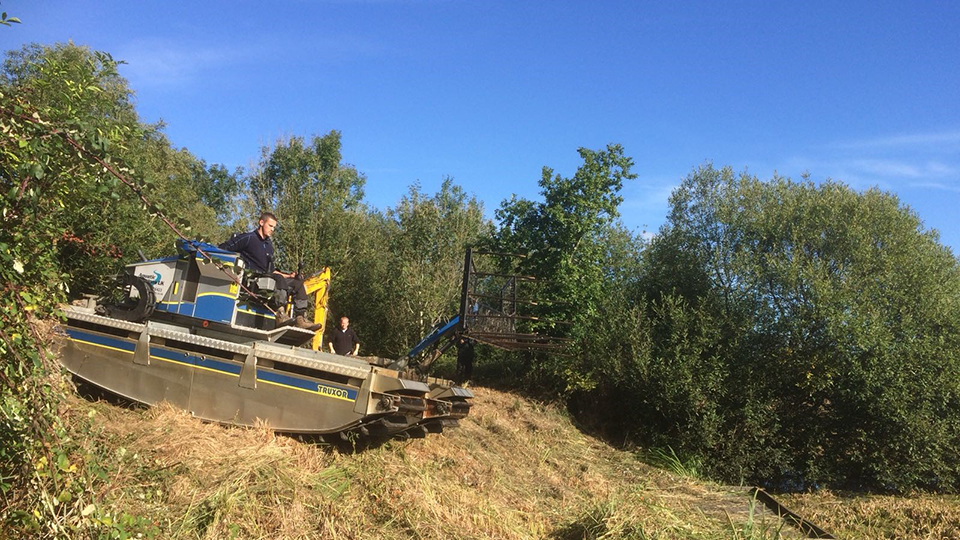When we think of wetlands in Norfolk, our minds probably head to the Broads National Park with its wildlife-rich broads, marshes, reed beds and damp woodlands. But one of the most remarkable wetland nature reserves in Norfolk lies south of Watton in the Brecks Living Landscape.
.jpg.aspx?width=770&height=540&ext=.jpg)
Large red damselfly, credit Neville Yardy
NWT Thompson Common is famous for its pingos, a series of around 400 shallow, fluctuating post glacial ice depressions that form wildlife rich ponds across the site. Protected by UK and European law, these are home to a fantastic range of rare wildlife: more than 400 species of plant have been recorded, 600 species of beetle, 25 butterflies and 19 dragonflies - including the scarce emerald damselfly, found at only a handful of locations in Norfolk. It is a top site for rare and previously unrecorded Norfolk species. Indeed in January this year, Ian Wallace of the UK Caddis Recording Scheme found a larva of the scarce brown sedge (Ironoquia dubia), a rare caddis fly which has not been recorded in the UK since 1994. Further survey work later this year should help us find out just how widespread it is at the site.
At the Common’s western corner is Thompson Water, a 6.5 hectare lake which is a favourite of wintering wildfowl and home to many aquatic insects and plants. One of these is water soldier, a native plant that can provide ideal habitat for a range of invertebrates such as the rare Norfolk hawker dragonfly larva. It also often brings other benefits to wildlife such as retaining open water and displacing other water plants like Canadian pond weed.
But for some years it has dominated Thompson Water and conversely is having an adverse effect on the ecology of the lake. It is thought to have been introduced to the site in the early 2000s, responding to nutrients that have built up in the lake from adjoining farmland. By 2010 it covered most of the lake’s surface.
To prevent the plant recolonising in such a vigorous way again, Norfolk Wildlife Trust has bought 23 hectares of adjoining farmland at Watering Farm, aided greatly by an anonymous donation.
The water soldier rises above the surface in the summer, reducing oxygen in the water. Coupled with having dominated and displaced other plants, the oxygen levels drop markedly and encourage anaerobic bacteria to grow, releasing hydrogen sulphide into the water. In the autumn the plants drop down to the bottom of the lake, adding more nutrients to the water as they decompose. This all impacts on the biodiversity in the lake.
In 2016 Norfolk Wildlife Trust received funding from Water Framework Directive for an ambitious five-year project to help remove water soldier from Thompson Water. With guidance from Environment Agency we began the removal over an extended period: this would allow us to very carefully and vitally monitor the water chemistry and any effects on the aquatic ecosystem over time to make sure we were restoring the fine balance of the water body.

Truxsor vehicle with weed rake, credit David Roberts
Seizing the moment and removing the plants is not easy. Due to the floating habit of the plant there is a small window of opportunity to harvest it in September each year. Specialist contractors use amphibious vehicles to rake up the plant, pushing it to the water’s edge where it is pulled out using a long reach excavator. The plant is left next to the water for a few days, which allows any invertebrates or fish to fall back into the water. The plants are then removed from site to compost down.
To prevent the plant recolonising in such a vigorous way again, Norfolk Wildlife Trust has bought 23 hectares of adjoining farmland at Watering Farm, aided greatly by an anonymous donation. This land was previously used as an arable and outdoor pig farm and was a major source for much of the nutrients entering Thompson Water. We are now planning its restoration which will make it part of the wider nature reserve, and the reduction in nutrients running into Thompson Water will help keep the lake a healthy and essential habitat for wildlife.